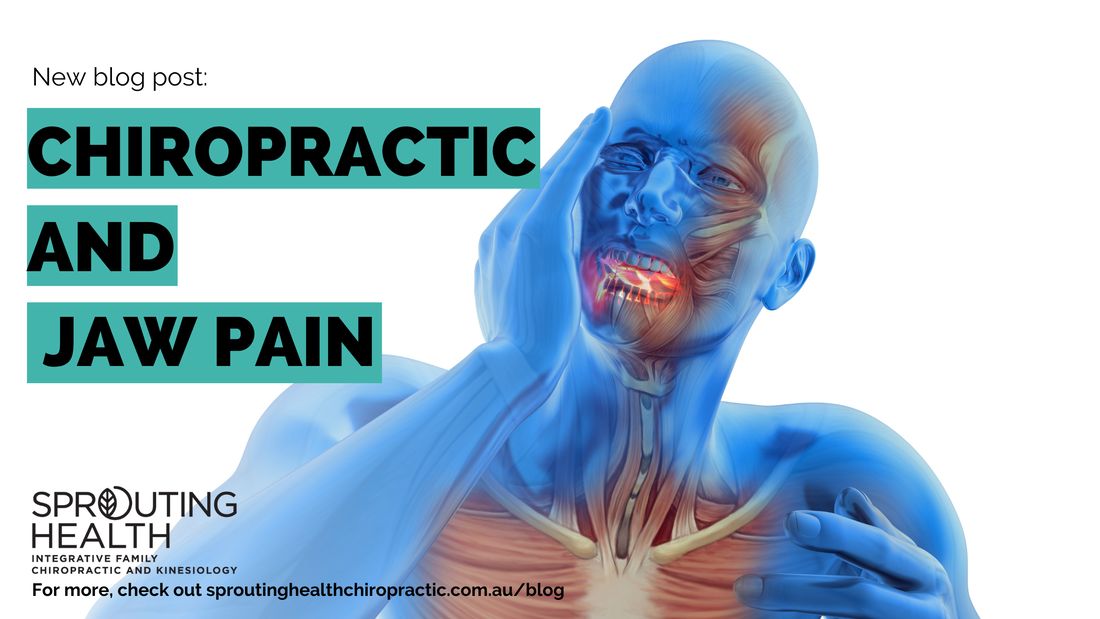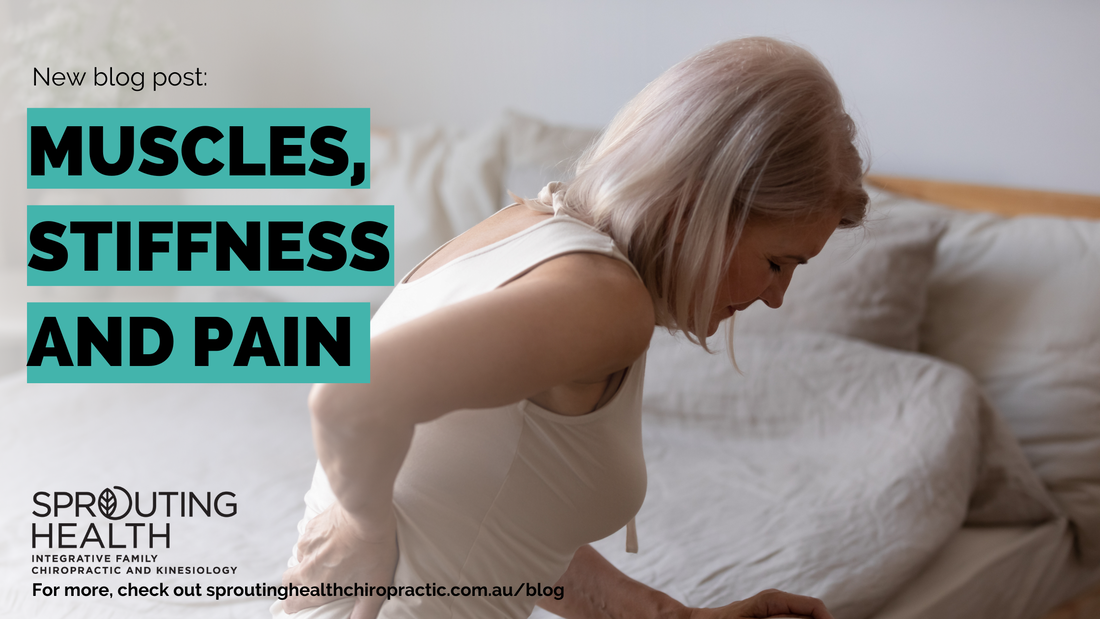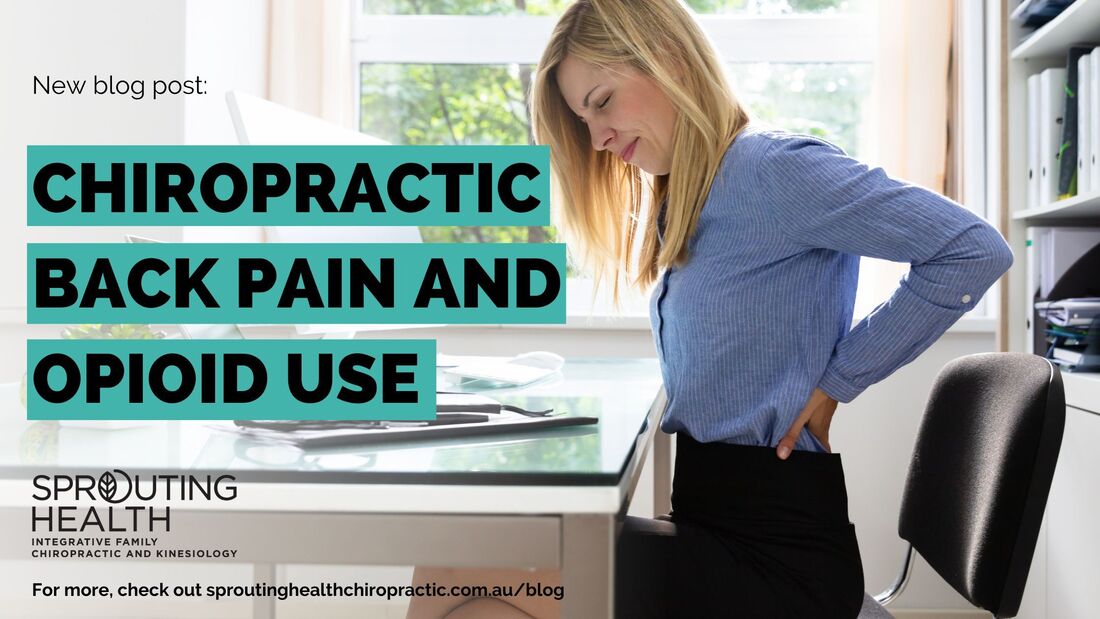|
Temporomandibular joint disorder or also known as TMD, is a common problem that many people do have. There is no one cause that has been identified for TMJ pain. Some predisposing factors that may contribute to TMJ pain are direct or indirect trauma, changes in occlusion (bite), systematic, genetic and psychosocial factors. (Graff Radford 2014)
Symptoms of TMD are variable among people. Headache and facial pain are chief complaints (Thilander 2002). There was a study that looked at 825 individuals with TMD. The study found that 59% has muscular pain, 13% had joint pain and 16% had both. (Vollaro 2001) Pain originating from the joint is well localized whereas pain originating from the muscle is more diffused. If the lateral pterygoid (one of the main chewing muscles) is hypertonic (too tight), a deep retro-orbital (around eys) pain may be felt (Laskin 2005). So what can help with TMD and the possible symptoms coming from it? There have been previous studies that looked at Chiropractic manual therapies on TMD and other methods such as combining manual therapy with dry needling or acupuncture to reduce TMD symptoms. All studies showed an improvement in symptoms. However, there is little research on Chiropractic treatment specifically on TMDs. A study in 2019 aimed to look at the effectiveness of Chirorpactic treatment on those with TMD. The study found that Chirorpactic had the ability to improve TMD symptoms. With regards to headache symptoms, chiropractic treatment could improve headaches of TMJ origin. However, a more extensive study should be conducted using a bigger sample group in order to more accurately represent the general population. So therefore, the results are no conclusive. If you have jaw pain or suspect TMD, we here at Sprouting Health Chiropractic would be happy to help manage and advise you of your problem. Citations
0 Comments
The human body has the skeleton as the main frame and movements are powered by our muscles! Different types of muscle help us with various activities we do on a daily basis. The following information is literally for everyone, not just for athletes.
2 main types of muscles There are mainly two types of muscles, fast twitch muscles (think sprinting) and slow twitch muscles (think distance running). Fast twitch muscles, also known as type 2b muscles, can generate a lot of power in a short period of time but get exhausted pretty quickly. This is due to the process of how power is being generated. They have a lower number of mitochondria, the powerhouse of energy, they feed on glucose and don’t use oxygen to produce energy.(1) For that reason, these muscles are used when we perform anaerobic exercises such as power lifting, jumping and high-intensity interval training (HIIT). Slow twitch muscles, also know as type 1 muscles, have a much better level of endurance and generally generate a lower level of burst energy power in a short time. Slow twitch muscles are highly vascularised, have a higher number of mitochondria and use oxygen to produce energy.(1) You guessed it! These muscles support aerobic/lower intensity exercises. For example, long-running, swimming, walking and even just sitting up right! Stiffness, pain and Injuries The slow twitch muscle group are generally located in our back and lower limb, it helps us sit, stand, walk and maintain our upright posture against gravity! It does not matter if you are on your feet all day or sit in front of a screen, you need these muscles to be functional to perform well and stay away from stiffness and pain. This is especially vital for those who suffer from lower limb injuries or arthritis and (those of us with a few extra kg’s) overweight individuals. A recent study on hamstring strain injury suggests hamstring fatigue can lead to a decrease in knee stability, reduction of lumbo-pelvic control and a less efficient muscle-tendon unit energy transfer, causing the increase demand on adjacent muscles and an increase risk of injuries. (2) If you have questions about how chiropractors can help manage lower back stiffness, back pain and muscle function, talk to one of our chiropractors to learn more. Reference 1. Patel H, Alkhawam H, Madanieh R, Shah N, Kosmas CE, Vittorio TJ. Aerobic vs anaerobic exercise training effects on the cardiovascular system. World journal of cardiology. 2017;9(2):134. 2. Huygaerts S, Cos F, Cohen DD, Calleja-González J, Guitart M, Blazevich AJ, et al. Mechanisms of hamstring strain injury: interactions between fatigue, muscle activation and function. Sports. 2020;8(5):65. Low back pain is quite common and it is one of the leading causes of disability globally, according to the Global Burden of Disease Study in 2010 (1,2). Do you or a loved one suffer from low back pain? This is an important article could make the world of difference to you.
“The most common condition for which opioids are prescribed is back pain (3)” From 2017 to 2018, the overall rate of deaths involving any opioids decreased, however in adults over the age of 65, deaths due to overdose increased for both all opioids and prescription opioids (4). Opioid use has been declared a public health emergency, with legally prescribed drugs contributing to substantial morbidity and mortality from addiction and overdose (5,6). Although current evidence based clinical guidelines identify non-pharmacological therapies as the preferred first line approach, opioids are still widely prescribed (7). In a recent research study a total of 40,929 individuals were included in the final sample, looking at early chiropractic care and physical therapy on subsequent opioid use among people with low back pain in Arkansas. It was found that those who received chiropractic care have decreased odds of opioid use, in particular long term opioid use (after a 1 year follow up), in newly diagnosed low back pain (8). Though more studies would help cement these findings, the study suggests that early chiropractic care can help with low back pain management and avoid the need for an opioid prescription. So if you want to find out if chiropractic care may help manage low back pain for you or your loved ones, have a chat with one of our chiropractors to see how they can assist. “Early intervention is important, as it is vital to get on top of issues before further deterioration occurs which complicates recovery and management of conditions” 1.Hoy D, March L, Brooks P, et al. The global burden of low back pain: estimates from the Global Burden of Disease 2010 study. Ann Rheum Dis. 2014;73:968-974. 2. Hoy D, March L, Woolf A, et al. The global burden of neck pain: estimates from the global burden of disease 2010 study. Ann Rheum Dis. 2014;73:1309-1315. 3. Hudson TJ, Edlund MJ, Steffick DE, Tripathi SP, Sullivan MD. Epidemiology of regular prescribed opioid use: results from a national, population- based survey. J Pain Symptom Manage. 2008;36:280–8. 4. Wilson N, Kariisa M, Seth P, Smith Ht, Davis NL. Drug and Opioid-Involved Overdose Deaths - United States, 2017–2018. MMWR Morb Mortal Wkly Rep 2020;69:290–7. 5. Han B, Compton WM, Jones CM, Cai R. Nonmedical prescription opioid use and use disorders among adults aged 18 through 64 years in the United States, 2003-2013. JAMA 2015;314:1468-78. doi:10.1001/jama.2015.11859 6.Rudd RA, Seth P, David F, Scholl L. Increases in drug and opioid involved overdose deaths - United States, 2010-2015. MMWR Morb Mortal Wkly Rep 2016;65:1445-52. doi:10.15585/mmwr. mm655051e1 7. Qaseem A, Wilt TJ, McLean RM, Forciea MA. Noninvasive treatments for acute, subacute, and chronic low back pain: a clinical practice guideline from the American College of Physicians. Ann Intern Med. 2017;166:514–30. 8. Acharya, M., Chopra, D., Smith, A.M., Fritz, J.M. and Martin, B.C., 2022. Associations Between Early Chiropractic Care and Physical Therapy on Subsequent Opioid Use Among Persons With Low Back Pain in Arkansas. Journal of Chiropractic Medicine. |
AuthorBlogs by the team at Sprouting Health Archives
July 2024
Categories |




 RSS Feed
RSS Feed
